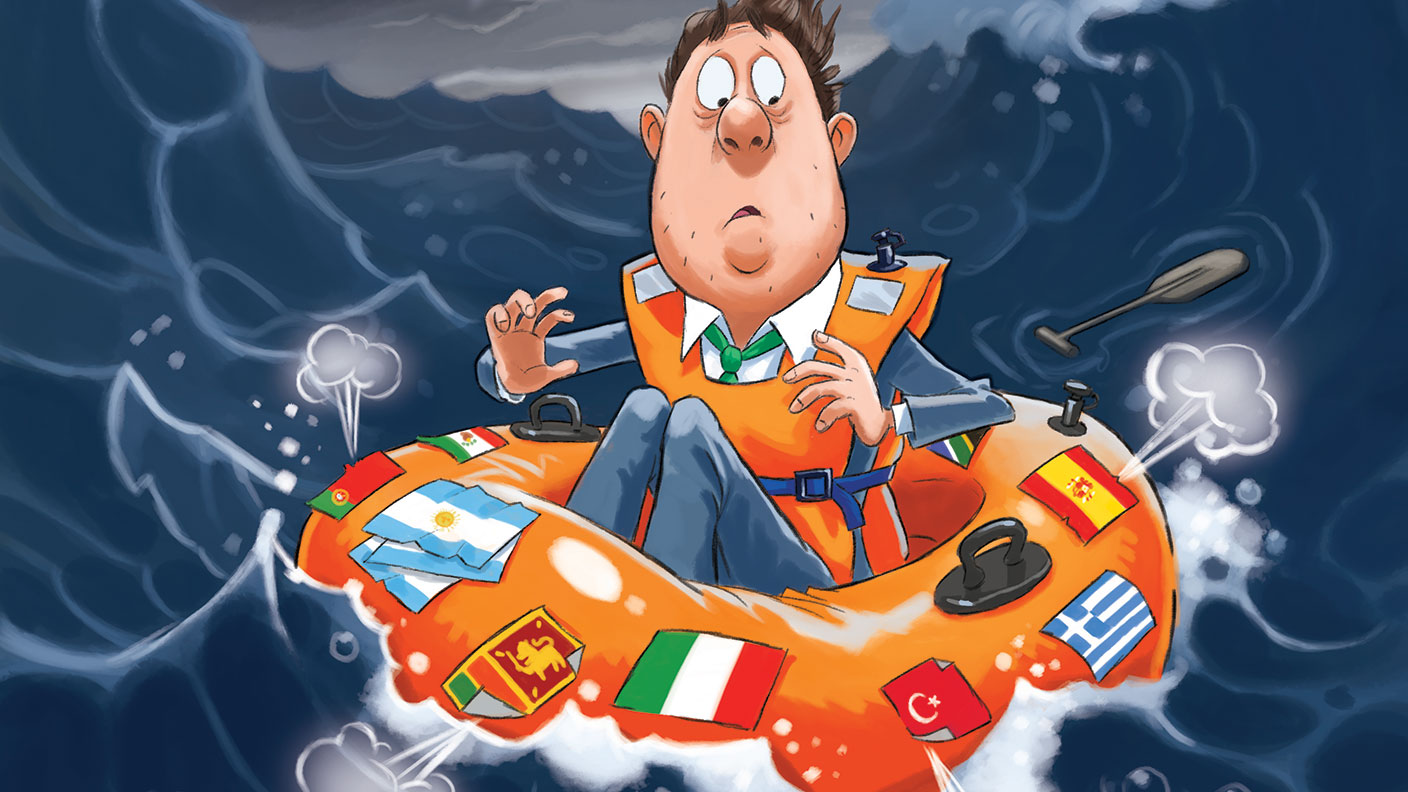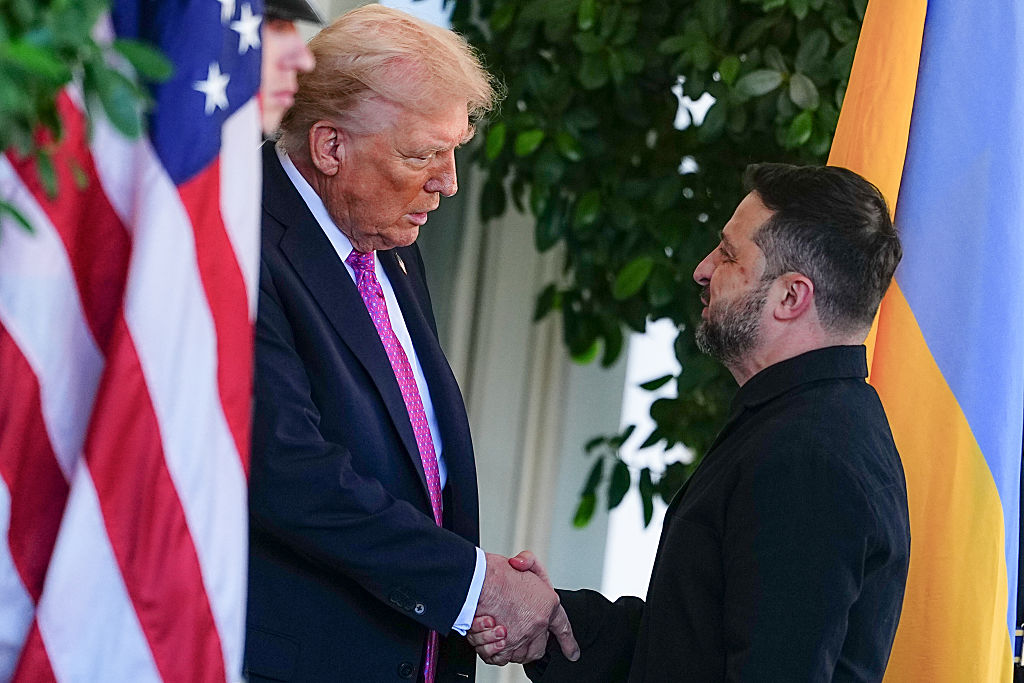Governments will sink in a world drowning in debt
Rising interest rates and soaring inflation will leave many governments with unsustainable debts. Get set for a wave of sovereign defaults, says Jonathan Compton.

It is unlikely that Barbados, Lebanon or Sri Lanka ever enters your investment thinking. Perhaps now they should. For although all are minnows in a sea of whales in financial terms, they are – to mix animal metaphors – dead canaries in the coal mine. In the last four years, each has gone bankrupt. Barbados defaulted on its foreign debt when a new government took office in 2018, Lebanon stopped paying after a series of economic crisis in 2020 and Sri Lanka did the same amid an economic meltdown last month.
All three went bust for what are effectively identical reasons, as did Argentina – which in 2020 defaulted for the ninth time in its history – and others. Economists would vigorously disagree, citing various theories instead, but the core problem in all cases is gargantuan government corruption – from elected politicians to lowly bureaucrats – robbing their treasuries and misspending whatever is left, along with woeful tax collection systems. Couple this with a complete lack of confidence in their legal systems and governance by domestic and foreign investors alike, and money flees abroad while economic activity plunges. Thus Sri Lanka, long self-sufficient in food, is now begging for foreign supplies as farmers can no longer afford to buy seeds or plant crops.
Sovereign default is a vague term, but one that can be defined as the failure by a government to pay the interest or capital on its foreign currency debt (usually bonds) when due. There are many sub-definitions of default, such as failing to repay local government debt, changing interest terms on loans, or radically debasing the currency. However, there are four immutable rules: sovereign default is normal, cyclical and (with very few exceptions) inevitable for every country; the contentious fourth rule is that sometimes it is the best option. These rules have been forgotten and although the world is slowly drowning in debt, investors are remarkably and foolishly unconcerned.
MoneyWeek
Subscribe to MoneyWeek today and get your first six magazine issues absolutely FREE

Sign up to Money Morning
Don't miss the latest investment and personal finances news, market analysis, plus money-saving tips with our free twice-daily newsletter
Don't miss the latest investment and personal finances news, market analysis, plus money-saving tips with our free twice-daily newsletter
An unprecedented bubble
The huge growth in access and availability of credit dating from the World War II has stimulated an unprecedented level of real economic growth and wealth. There are multiple benefits to the ability to borrow. For governments, it allows them to build necessary infrastructure. Companies can invest and expand, and thus employ more people. People get the opportunity to enjoy a once inconceivable lifestyle, from home ownership to foreign holidays and a host of consumer goods. However, problems arise when the interest, the capital or both cannot be repaid.
We are in an unprecedented credit bubble. Before the pandemic, the numbers were already alarming. The total stock of global debt had already more than doubled between the 2008 financial crash and 2020 to $226trn or about 2.5 times the world’s total GDP. Partially because of the costs of the pandemic it has since soared to more $300trn (3.5 times global GDP), according to the Institute for International Finance. Notable within these numbers is that government debt has overtaken all the rest combined for the first time and that, unsurprisingly, China has roared into the room to the extent that the increase since 2007 in money terms in its non-financial-sector corporate debt and household debt has been greater than all the advanced economies combined.
Debt is always a high-wire balancing act, requiring a combination of being able to pay the interest, giving an impression you can repay the capital and, most importantly, convincing lenders you’re a good risk so that will pony up more loans. The spectacular surge in debt was possible primarily because interest rates persistently declined to zero and were even negative for several major countries. This allowed governments to issue bonds in record quantities not just for new borrowing, but also to replace older, more expensive loans with larger but overall cheaper new ones. Thus despite ever-rising debts, their interest costs tumbled.
This has reversed. Central banks have under-estimated inflation and are rushing to catch up with a rapid series of interest-rate increases. Suddenly new debt becomes more expensive. At the end of 2021, the governments of heavily indebted developed economies and raggedy republics alike were paying peanuts in terms of the interest cost as a percentage of their revenue, such as France at a mere 3.3%, or Sudan at 5.2%. Globally, interest costs were about 6% of all government revenue last year.
Yet as rates rise, the annual cost of borrowing reverts to the more normal level of low double digits, and higher for many countries. For the first time in nearly 20 years governments globally are going to find new funding for healthcare, pensions, education or infrastructure difficult, while painful cuts in previously untouchable areas will be required. The popular and electoral reaction to this situation is unlikely to be one of calm acceptance.
Japan leads the way
The financial strength of a given country is often measured by its debt-to-GDP ratio, the level of general government debt relative to the size of the economy. As a rule of thumb, over 90% is a default red flag. Yet it is an imprecise tool, as demonstrated by Japan. Its debt-to GDP has been above that level since last century and is a world-beating 260%, yet it’s having no problem in paying its interest bill or raising new loans. Many other advanced economies are also well above red-flag levels, such as the UK, US and many eurozone countries.
Japan offers a clue as to how some developed countries will – for a while at least – mitigate the inevitable squeeze. In Japan, the largest holder of bonds is the central bank and because it is a government subsidiary, the government doesn’t have to pay these back. It also now purchases 70% of all new bonds. Most of the rest are bought by banks, insurance and trust firms, not because their directors are especially dim or patriotic, but because they are forced to by the government for their core reserves and key ratios. It’s a brilliant three-card trick, which to date has allowed “stagnant” Japan to enjoy an enviably high standard of living and for decades to keep interest rates ultra-low.
Other developed countries belatedly imitated Japan, witness the “independent” Bank of England, which owns around a third of all UK government bonds. But, like all three-card tricks, eventually the sucker punters realise the con. In the case of Japan, the yen has been tumbling because of low interest rates. In the UK and US, inflation, an end to quantitative easing and other factors are pushing interest rates higher.
However, there is one further trick that these countries have left, which will be the last throw before governments must either slash borrowing – leading to recession – or default. These central banks will simply write off the bonds they have bought from their governments. Purists will be appalled because their books will no longer “balance”, but does anyone really believe the books of central banks balance anyway? Meanwhile, bondholders will love it, since the risk of them not being repaid diminishes because debt-to-GDP ratios will have been slashed.
These options are available only to some of the G20 advanced countries. Most other nations are already being squeezed, despite the reality that interest rates remain far below long-term averages and massively negative in real terms, even after recent rises. Thus many economies are in for a battering.
Rising rates not only affect the price of credit, but also its availability. Suddenly, once-feted borrowers are finding their friends have disappeared. Meanwhile, the surges in commodity and food prices are shredding personal incomes. These are unlikely to revert to previous levels for many years, even if the invasion of Ukraine were to cease tomorrow, so there is no hope of relief to be had there. Since commodities and food account for a far higher proportion of personal expenditure in developing economies than in the wealthiest economies and domestic consumption is the key economic driver in most countries, this will weaken economic growth and thus tax revenue. A few commodity-producing countries will escape, but the economies of many commodity producers perceived as “safe” have become more diversified, so benefit less.
A holistic view of the risks
I mentioned that high debt-to-GDP ratios are only a rough guide to financial strength. There are several reasons why they should be treated with caution. First, many countries may have a low ratio at the government level, but corporate- and personal-level borrowing in foreign currencies has been growing. Such mismatches – borrowing in one currency to invest at home in another – are notoriously destabilising.
Next is capital flows. Smaller countries are usually very dependent on foreign investment. This is always fickle and can swing on election results, threats from neighbours, or a rise in, say, energy and food prices. Weak or despotic leaders also spook the horses. Historical data shows a clear pattern. Sovereign defaults always surge following a spike in interest rates and a slowdown or reversal in capital flows – the conditions that we are seeing today.
Finally, despite America’s domestic problems and impressively high debt-to-GDP ratio, investors will continue to flee to the dollar during periods of uncertainty. The dollar then strengthens, which always makes life difficult for smaller or developing economies.
Two major international bodies exist to ensure that in theory defaults neither happen nor spread. The less important is the Paris Club, founded in 1956. With 22 permanent members from wealthy countries, plus international observers, it meets frequently to resolve problems in indebted countries. Recently it has linked up with a G20 initiative called the Common Framework with similar aims. It is highly politicised: its members’ prime concerns seem to be either to protect their domestic banks from losing their shirts from foolish lending, or areas of specific self-interest. Thus France will fight hard to rescue Tunisia, but not, say, Kenya, while Britain will do the opposite.
The decline of the IMF
The better-known body is the International Monetary Fund (IMF). Every United Nations country has to pay into this, on a proportionate basis to the size of their economies and guarantee further funding (though many – such as the US – are in arrears). Its theoretical firepower after recent new commitments is immense at a trillion dollars. Still, my hunch is that neither the IMF nor the Paris Club will be able to cope in coming years, even if the IMF’s funders actually pay in.
The IMF was an idealistic and admirable creation (see below), but has become fossilised and disingenuous. I have watched its brazenness with admiration. Under its constitution it can never write off a loan. However, it has special powers to suspend payments, in some cases seemingly forever. It also claims to have suffered very few losses, which is mischievously dishonest.
For example, Pakistan has borrowed 22 times. It has never repaid a cent, except either through new loans from the IMF or from the Gulf states, who also appear never to have been repaid. The IMF’s largest borrower is Argentina, which has defaulted five times since 1980. Like Pakistan, it goes through the pretence of repaying some debt, but takes more IMF money to do so.
The result is that the IMF has created dependent vassal states to which it is in turn in thrall. These countries can never be weaned off aid, but the IMF cannot be seen to write off the bad debts. The IMF list of outstanding loans and repayments shows $107bn on loan. Looking through this list, only a compulsive gambler would bet more than a quarter will ever be repaid. On top of this glaring problem of unrepayable debts, there is the damage the IMF often causes with its “cures” – although rarely enforced – and its willingness to deal with any despot or dictator. It’s a sorry decline.
In total, 147 governments have defaulted on debts since 1960. Only eight countries have not defaulted or utterly debased their currencies since 1900. I know a major debt-default storm is coming because it has started. Defaults are already on the rise and are going up faster than the increasingly opaque data. Many defaults are bilateral – such as African and Asian countries failing to repay loans to China or Russia – and never reported. Most probably it spreads later this year and next among smaller or less developed countries. Yet so large is the debt bubble that there have to be some major casualties further out as interest rates rise.
For all the considerable academic work on signals of likely default, the best guide has been a country’s previous form. Proven serial defaulters – such as Argentina, Greece, Mexico, Portugal, Spain and Turkey – must be in the cross-hairs. So too may those with alarming debt-to-GDP ratios and little hope of growing out of the problem, such as Italy or South Africa. However, the EU countries on the list will probably be part of the endgame, as every ruse will be tried to avoid such an event. Despite being a historic serial defaulter, China is low on my list because it has very little foreign debt. However, it ranks highly for the likelihood of a banking collapse, because of its domestic debt splurge.
Should investors run for the hills? From government bonds, yes – if only because the 40-year bull market has ended. From cash too, given rising inflation. But they should also be strolling towards equities. Companies with the right characteristics can and do survive defaults and worse. Just as it was once thought impossible that bond yields could be negative, so it has been forgotten that on extreme occasions some companies have been seen as a better credit risk than their national governments. So don’t be fooled by those many hands out at sea waving at you to join them. They are not in a happy place.
I wish I knew what Bretton Woods was, but I’m too embarrassed to ask
The Bretton Woods agreement was born out of the need to have a more open and better regulated financial world after the end of World War II, avoiding the economic rivalries and protectionism that resulted from, and worsened, the Great Depression. In July 1944, 730 delegates from 44 countries gathered in Bretton Woods, New Hampshire, to discuss how best to go about achieving their aims.
The key outcomes of the conference included: establishing a system of fixed exchange rates, under which all currencies were pegged to the dollar and the dollar was convertible into gold; setting up the International Monetary Fund (IMF); and setting up the International Bank for Reconstruction and Development (IBRD), which later became the World Bank.
The IMF was intended to be a forum for international economic cooperation that would promote sound economic policies among its members – effectively the keeper of the rules. It would also provide financial support to members with balance of payments problems, so that regular international trade could function.
The IBRD originally provided funding to help countries that had been devastated by the war. Later, its aims shifted to supporting economic development – including funding infrastructure – and then it focused on attempting to reduce poverty in developing countries.
The IBRD became operational in June 1946 and the IMF in March 1947. The exchange-rate system became operational in 1958 when exchange controls were eliminated for current-account transactions and member currencies became convertible. While the IMF and World Bank still exist today, the exchange-rate agreement ended in the early 1970s when US president Richard Nixon ended the gold standard in America so that dollars could no longer be converted to gold. The system of fixed exchange rates fell apart and most major currencies began to float freely.
Get the latest financial news, insights and expert analysis from our award-winning MoneyWeek team, to help you understand what really matters when it comes to your finances.
Jonathan Compton was MD at Bedlam Asset Management and has spent 30 years in fund management, stockbroking and corporate finance.
-
 Boost for over 100,000 families on Child Benefit as new HMRC payment system rolled out
Boost for over 100,000 families on Child Benefit as new HMRC payment system rolled outThousands of households will no longer have to pay the dreaded High Income Child Benefit Charge through self-assessment
-
 Are you being haunted by the ghost of Christmas past? How festive cutbacks could boost your long-term wealth
Are you being haunted by the ghost of Christmas past? How festive cutbacks could boost your long-term wealthThe average family spends around £1,000 over the Christmas season. Here’s how much you could have gained if you had invested some of the money instead.
-
 No peace dividend in Trump's Ukraine plan
No peace dividend in Trump's Ukraine planOpinion An end to fighting in Ukraine will hurt defence shares in the short term, but the boom is likely to continue given US isolationism, says Matthew Lynn
-
 Investors need to get ready for an age of uncertainty and upheaval
Investors need to get ready for an age of uncertainty and upheavalTectonic geopolitical and economic shifts are underway. Investors need to consider a range of tools when positioning portfolios to accommodate these changes
-
 Ukraine invades Russia – what are the political implications?
Ukraine invades Russia – what are the political implications?Ukraine's surprise invasion into Kursk could change the course of the war politically
-
 UK wages grow at a record pace
UK wages grow at a record paceThe latest UK wages data will add pressure on the BoE to push interest rates even higher.
-
 Trapped in a time of zombie government
Trapped in a time of zombie governmentIt’s not just companies that are eking out an existence, says Max King. The state is in the twilight zone too.
-
 America is in deep denial over debt
America is in deep denial over debtThe downgrade in America’s credit rating was much criticised by the US government, says Alex Rankine. But was it a long time coming?
-
 UK economy avoids stagnation with surprise growth
UK economy avoids stagnation with surprise growthGross domestic product increased by 0.2% in the second quarter and by 0.5% in June
-
 Bank of England raises interest rates to 5.25%
Bank of England raises interest rates to 5.25%The Bank has hiked rates from 5% to 5.25%, marking the 14th increase in a row. We explain what it means for savers and homeowners - and whether more rate rises are on the horizon